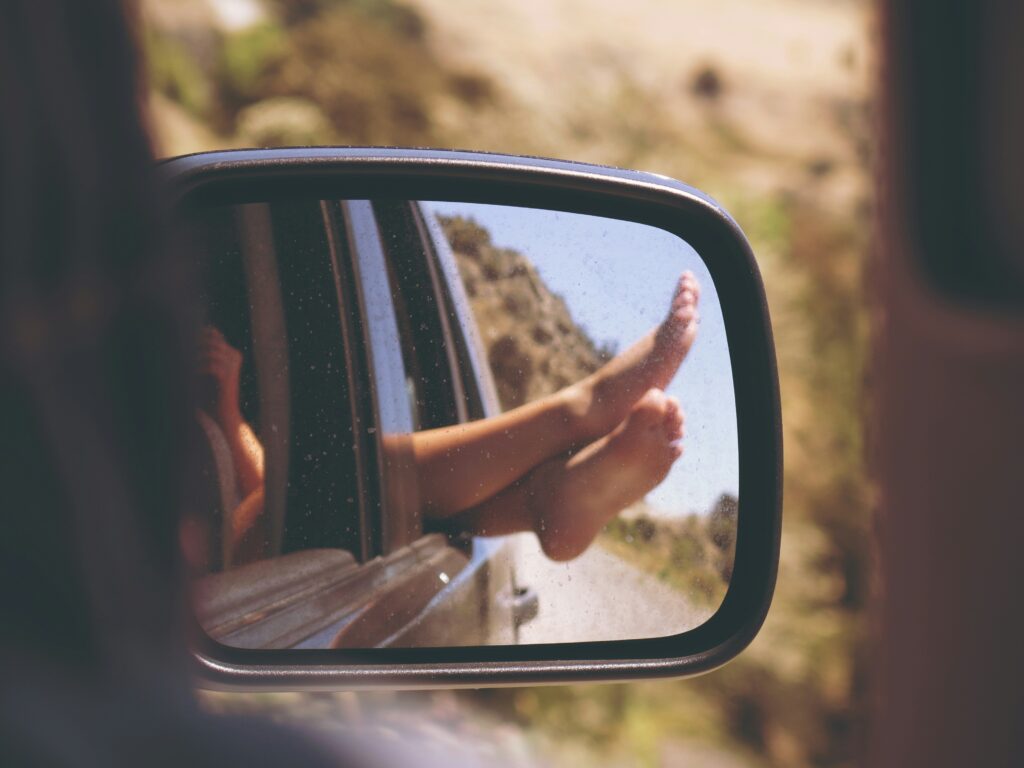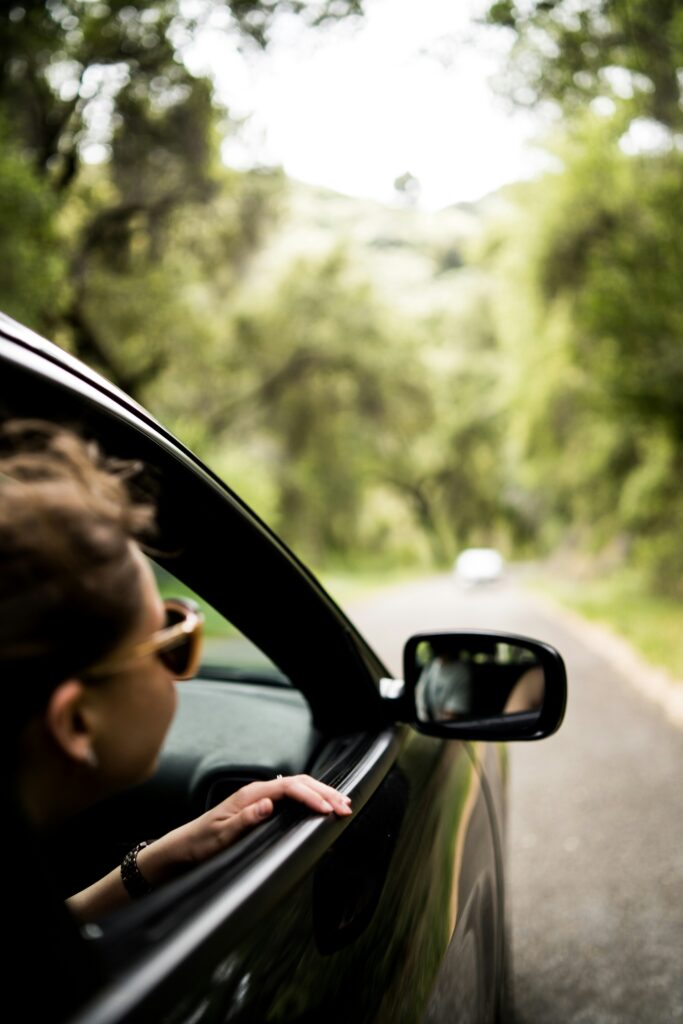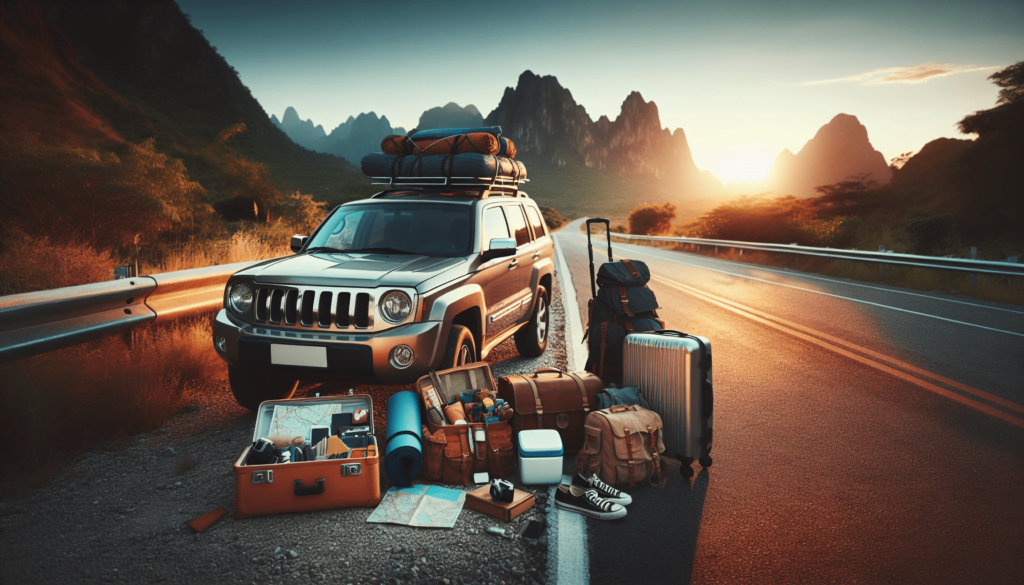Taking a road trip can be an exciting and memorable experience, but without proper preparation and execution, it can quickly turn into a frustrating and chaotic undertaking. In order to ensure a smooth and enjoyable journey, it is important to follow certain best practices. From meticulously planning the route and packing essential items, to ensuring vehicle maintenance and safety, this article explores the key factors that contribute to a successful road trip. By adhering to these best practices, travelers can maximize their enjoyment and minimize any potential setbacks, allowing them to fully embrace the adventure of the open road.
Table of Contents
What Are The Best Practices For A Road Trip?
Vehicle Maintenance
Check fluid levels
One of the most important aspects of vehicle maintenance is regularly checking fluid levels. This includes engine oil, coolant, brake fluid, and windshield washer fluid. Adequate levels of these fluids are crucial for the proper functioning of your vehicle. Low engine oil can cause engine damage, while low coolant can lead to overheating. Brake fluid ensures the effectiveness of your brakes, and windshield washer fluid keeps your windshield clean for optimal visibility while driving. By regularly checking and topping up these fluid levels, you can prevent potential issues and ensure a smooth and safe road trip.
Inspect tires
Before embarking on your road trip, it is essential to inspect your vehicle’s tires. Check the tire pressure to ensure they are properly inflated, as under-inflated or over-inflated tires can affect your vehicle’s handling and fuel efficiency. Additionally, inspect the tire tread depth to ensure it meets the minimum requirements for safe driving. Worn-out or bald tires can negatively impact traction on the road, particularly in wet or slippery conditions. Finally, examine the tires for any signs of damage, such as cuts or bulges, which could lead to a blowout while driving. Taking the time to inspect and maintain your tires before setting off on your road trip will help keep you safe on the journey.
Replace windshield wipers
Clear visibility is crucial while driving, especially during adverse weather conditions. Therefore, it is important to check and replace your windshield wipers if necessary before heading out on your road trip. Over time, windshield wipers can wear down and become less effective at clearing rain, snow, or debris from your windshield. This can hinder your vision and increase the risk of accidents. By replacing your windshield wipers before your trip, you can ensure optimal visibility and a safer driving experience.
Test lights and signals
Properly functioning lights and signals are vital for your safety and the safety of other drivers on the road. Before embarking on your road trip, check that all your vehicle’s lights and signals are working correctly. This includes headlights, taillights, brake lights, turn signals, and hazard lights. Test each of them to confirm they illuminate as intended. Inadequate lighting can reduce visibility for yourself and other drivers, increasing the risk of accidents, especially during night driving or inclement weather. By ensuring all your lights and signals are in proper working order, you can enhance your visibility and optimize safety during your road trip.
Route Planning
Research and choose destinations
A successful road trip often starts with thorough research and choosing destinations that align with your interests and preferences. Take the time to research different locations and attractions along your desired route. Consider factors such as distance, weather conditions, and any specific activities or landmarks you wish to visit. By thoroughly researching and selecting your destinations, you can maximize your enjoyment and make the most of your road trip experience.
Consider scenic routes
While choosing the most efficient or direct route may seem tempting, considering scenic routes can greatly enhance your road trip experience. Scenic routes often take you through picturesque landscapes, allowing you to enjoy the beauty of nature and discover hidden gems along the way. Research and identify scenic routes that align with your itinerary. These routes can provide a more enjoyable and memorable journey, filled with stunning vistas and unique experiences.
Map out rest stops
Planning rest stops is essential for both safety and comfort during a road trip. Identify suitable locations along your route where you can take breaks and stretch your legs. Rest stops may include rest areas, service stations, or scenic viewpoints. It is important to plan regular rest stops to combat driver fatigue, as prolonged periods of driving can impair your concentration and reaction times. Mapping out rest stops in advance ensures that you have designated places to rejuvenate and stay alert throughout your journey.
Be aware of road conditions
Road conditions can greatly impact your road trip experience, so it is essential to stay informed and vigilant. Check weather forecasts for your planned route and destination areas. Be aware of any potential road closures, construction zones, or detours that may affect your travel plans. Additionally, consider any seasonal factors that could impact road conditions, such as heavy snowfall, flooding, or extreme heat. By staying aware of road conditions and adjusting your plans accordingly, you can navigate your road trip safely and avoid unnecessary delays or hazards.

Packing Essentials
Valid driver’s license and registration
Before setting out on your road trip, it is crucial to ensure you have your valid driver’s license and vehicle registration with you. These documents are not only required by law but may also be necessary for identification purposes. Having them readily available will save you from potential fines or legal issues if you are pulled over by law enforcement.
Proof of insurance
Another important item to pack for your road trip is proof of insurance. Carrying proof of insurance will provide coverage in case of any accidents or damages that may occur during your journey. It is recommended to have both a physical copy and a digital copy of your insurance proof for easy access when needed. It is also advisable to review your insurance coverage to ensure it is up to date and provides adequate protection for your road trip.
Emergency kit
An emergency kit is an essential item to have in your vehicle during a road trip. This kit should include items such as a flashlight, jumper cables, a tire repair kit, a portable tire inflator, a toolkit, and a basic set of spare parts like fuses and bulbs. These items will come in handy if you encounter any unforeseen mechanical issues along the way. It is important to check that all the equipment in your emergency kit is in good working condition before departing on your road trip.
First aid supplies
Accidents and injuries can happen at any time, so it is essential to have a well-stocked first aid kit in your vehicle. This kit should include items like bandages, antiseptic ointment, pain relievers, adhesive tape, scissors, and any necessary prescription medications. Familiarize yourself with the contents of your first aid kit and ensure that nothing is expired or in need of replacement. Having a well-prepared first aid kit can provide peace of mind and ensure quick response in case of any medical emergencies during your road trip.
Comfortable Clothing and Accessories
Layered clothing
When going on a road trip, it is important to pack comfortable clothing that allows for layering. Climate and weather conditions can vary significantly throughout your journey, so having layers will allow you to adapt to changing temperatures. Opt for breathable materials that provide both comfort and versatility. Additionally, consider packing a light jacket or sweater for cooler evenings or unexpected weather changes.
Comfortable shoes
Comfortable footwear is crucial for a road trip, as you will be spending a significant amount of time on your feet while exploring various destinations. Choose shoes that provide good support and cushioning to prevent foot fatigue and discomfort. It is advisable to pack a pair of sturdy walking shoes or sneakers that are suitable for both walking long distances and embarking on any outdoor adventures you may encounter along the way.
Sunglasses
Protecting your eyes from harmful UV rays is essential, especially when spending prolonged periods in the car or outdoors. Pack a pair of quality sunglasses that offer 100% UV protection. This will not only shield your eyes from the sun’s rays but also reduce glare and enhance visibility while driving. Choose sunglasses that are comfortable to wear for extended periods and suit your personal style.
Sunscreen
While driving, your skin is often exposed to the sun’s rays through the car windows. To protect your skin from potential sunburn and long-term damage, it is important to apply sunscreen regularly. Choose a broad-spectrum sunscreen with a high SPF (at least 30) to protect against both UVA and UVB radiation. Apply sunscreen to all exposed areas of skin, even on cloudy days, and reapply every few hours to maintain adequate protection. Packing sunscreen ensures that you can enjoy your road trip without the discomfort or health risks associated with sunburn.

Snacks and Water
Non-perishable snacks
When embarking on a road trip, Having a variety of non-perishable snacks is essential for maintaining energy levels and avoiding hunger on the road. Choose snacks that are easy to store and consume while driving, such as granola bars, nuts, trail mix, or dried fruit. These snacks provide a convenient source of nutrition and can help curb hunger between meals. It is important to pack enough snacks for the duration of your road trip, taking into account any dietary restrictions or preferences of you and your fellow travelers.
Bottled water
Staying hydrated during a road trip is crucial for your overall well-being and concentration. Packing an ample supply of bottled water ensures that you have access to clean drinking water throughout your journey. It is advisable to pack enough water bottles for each passenger, considering factors such as the duration of the trip and the availability of rest stops or refill stations along your route. Staying properly hydrated will help you stay alert and maintain optimal physical performance while driving.
Reusable water bottles
In addition to bottled water, it is also recommended to pack reusable water bottles. These bottles can be refilled with water at rest stops or restaurants along your route, helping to reduce unnecessary waste from single-use plastic bottles. Reusable water bottles are environmentally friendly and provide a convenient way to stay hydrated during your road trip. Ensure that the water bottles are made from materials that are durable, leak-proof, and easy to clean.
Cooler for perishable items
If you plan to bring perishable food items or beverages on your road trip, packing a cooler is essential to keep them fresh and safe for consumption. Choose a cooler with sufficient insulation and capacity to accommodate your perishable items. Use ice packs or frozen gel packs to maintain the desired temperature inside the cooler. It is important to properly pack and store perishable items in the cooler to prevent cross-contamination and spoilage. With a well-packed cooler, you can enjoy fresh food and beverages throughout your road trip.
Entertainment and Navigation
Map or GPS device
To navigate your road trip effectively, it is important to have reliable navigation tools on hand. While smartphones with GPS capabilities are commonly used, it is also advisable to have a physical map as a backup. A paper map can be helpful in areas with limited or no cellular network coverage. Familiarize yourself with the route and have a general understanding of the directions before starting your journey. Having a map or GPS device ensures that you can navigate confidently and efficiently.
Music playlist or podcasts
To enhance your road trip experience, curating a music playlist or downloading podcasts is a great way to stay entertained during long hours of driving. Create a playlist with a diverse selection of music genres that cater to the preferences of yourself and your companions. Alternatively, download podcasts that cover a wide range of topics to keep you engaged and mentally stimulated. These audio options will provide entertainment and make the journey more enjoyable.
Books or audiobooks
For those who enjoy immersing themselves in literature, packing books or audiobooks can be a great source of entertainment during a road trip. Choose books that align with your interests, whether they be novels, travel guides, or non-fiction titles. If opting for audiobooks, select engaging narrations that will captivate your attention while driving. Reading or listening to books not only offers entertainment but also allows for personal growth and learning while on the move.
Travel games
If you are traveling with others, having travel games on hand can foster camaraderie and provide hours of entertainment. Consider classic options such as card games, word games, or trivia games that can be played by all ages. These games can help pass the time during long stretches of driving and create memorable moments with your travel companions. Remember to prioritize road safety and play games only during appropriate times, such as during rest stops or when someone else is driving.

Rest and Sleep
Plan for regular rest stops
Rest stops are crucial for maintaining driver alertness and reducing the risk of fatigue-related accidents. Plan for regular rest stops along your route, aiming for a break every two to three hours or as needed. Utilize rest areas or service stations to stretch, use restroom facilities, and take short walks to improve circulation. Taking regular breaks allows you to recharge and refresh your mind, ensuring that you stay attentive behind the wheel.
Avoid driving when fatigued
Driving when fatigued poses significant dangers to both yourself and others on the road. Fatigue can impair your reaction time, decision-making abilities, and overall cognitive function. Avoid driving when you are feeling excessively tired or drowsy. Instead, either take a nap, switch drivers if traveling with others, or find a nearby accommodation for an overnight stay. Prioritize your well-being and ensure that you are well-rested before continuing your journey.
Consider overnight stays if necessary
Depending on the length and duration of your road trip, it may be necessary to incorporate overnight stays at accommodations along your route. If your journey spans multiple days or includes long stretches, plan for overnight stays in advance. Research and book accommodations that suit your preferences and budget. Overnight stays provide an opportunity to rest, recharge, and explore the local area. It also allows for a more relaxed and enjoyable road trip experience.
Pack comfortable pillows and blankets
To enhance your comfort during rest or overnight stays, pack pillows and blankets that provide adequate support and warmth. Choose pillows that cater to your personal sleeping preferences, whether they be firm or soft. Opt for blankets that can be easily folded or compressed for convenient storage in your vehicle. Having comfortable pillows and blankets ensures a good night’s rest, whether at a hotel, campground, or any other accommodation along your road trip.
Safety Measures
Buckle up and secure passengers
Safety should always be a top priority during a road trip. Ensure that all passengers, including yourself, are wearing seat belts at all times while the vehicle is in motion. Make it a habit to check that everyone is securely buckled up before starting the journey or resuming driving after a break. Seat belts significantly reduce the risk and severity of injuries in case of an accident. By enforcing and adhering to seat belt usage, you are taking a vital step towards ensuring a safe and protected road trip.
Follow traffic rules and speed limits
Adhering to traffic rules and speed limits is essential for your safety and the well-being of other road users. Familiarize yourself with the traffic regulations of the places you will be traveling through. Observe and follow speed limits, even if they may be different from what you are accustomed to in your home area. It is also important to obey all road signs, signals, and instructions. By being a responsible and law-abiding driver, you are contributing to a safer road trip experience for everyone involved.
Avoid distractions
Distracted driving is a leading cause of accidents on the road. To ensure a safe road trip, it is important to minimize distractions while driving. Avoid using electronic devices like cell phones or tablets unless in a hands-free mode or when parked in a safe location. If you need to attend to any tasks that could divert your attention from the road, pull over at a designated rest stop or safe area. By prioritizing focus and eliminating distractions, you increase the overall safety of your road trip.
Be cautious in unfamiliar areas
When driving in unfamiliar areas, it is essential to exercise extra caution and be alert to your surroundings. Pay attention to road signs, traffic patterns, and potential hazards. Be prepared for different driving conditions, such as unique road layouts, unfamiliar traffic regulations, or challenging terrains. Utilize your navigation tools to stay on the correct route and be mindful of pedestrian activity and local driving customs. Practicing caution and adaptability in unfamiliar areas will help ensure a safe and smooth road trip experience.

Budgeting and Finances
Estimate fuel costs
Fuel costs are a significant consideration when planning a road trip. Estimate the amount of fuel you will need based on the distance you intend to travel and the expected fuel efficiency of your vehicle. Check current fuel prices to have a general idea of how much you may spend on fuel. It is also advisable to consider variations in fuel prices along your route, especially if passing through different states or countries. Having a clear estimate of fuel costs allows you to budget appropriately and allocate funds accordingly.
Prepare for tolls or parking fees
Some roads, bridges, or tunnels may require payment of tolls, while parking fees may apply in certain areas or attractions. Research and identify any toll roads or potential parking fees along your route. Take note of the costs associated with these expenses and factor them into your road trip budget. Having an understanding of potential tolls or parking fees helps you avoid unexpected expenses and ensures that you have sufficient funds available to cover these costs.
Set aside emergency funds
While it is important to budget for planned expenses, it is equally crucial to set aside emergency funds for any unforeseen circumstances. Unexpected situations, such as vehicle breakdowns, medical emergencies, or road closures, may require additional expenses. Prepare a separate portion of your budget strictly for emergencies and unforeseen costs. Having emergency funds readily available provides peace of mind and minimizes financial stress during unexpected situations on your road trip.
Keep track of expenses
Throughout your road trip, it is recommended to keep track of your expenses to maintain a clear overview of your budget. Monitor your spending on items such as fuel, tolls, accommodations, dining, and attractions. Utilize mobile apps or digital tools to record and categorize your expenses for easy reference. Regularly reviewing your expenses will help you stay within budget and make necessary adjustments if needed. It also serves as a valuable resource for post-trip analysis and financial planning for future road trips.
Communication and Emergency Resources
Carry a fully charged phone
A fully charged phone is a vital tool during a road trip that allows you to stay connected and access necessary resources. Make sure to charge your phone before setting off and keep it plugged in when driving. It is advisable to have a car charger or portable power bank available to ensure your phone stays powered throughout the journey. A fully charged phone enables communication, access to navigation tools, and quick assistance during emergency situations.
Program important numbers
Before starting your road trip, program important numbers into your phone for quick access. These numbers may include emergency services, roadside assistance, the contact information of your trusted mechanic or insurance provider, and the phone numbers of family or friends who can help in case of emergencies. Having these numbers readily available reduces response time in urgent situations and provides peace of mind knowing that help is just a phone call away.
Share itinerary with a trusted contact
For added safety and security, share your road trip itinerary with a trusted contact, such as a family member or close friend. Provide them with details about your planned destinations, expected arrival times, and any alternative routes you may take. Regularly update your contact with any changes to your itinerary. This information allows someone else to maintain awareness of your whereabouts and can be crucial in case of any unexpected emergencies or situations arising during your road trip.
Research local emergency services
Before entering a new area or destination, it is advisable to research and familiarize yourself with the local emergency services available. Identify the locations of hospitals, urgent care centers, police stations, and fire departments in the areas you will be traveling through. Familiarize yourself with the local emergency contact number, as it may differ from your home region. Being aware of local emergency services ensures that you can quickly and efficiently seek help if needed during your road trip.
In conclusion, following best practices for a road trip ensures a well-prepared and enjoyable experience. From vehicle maintenance to safety measures and budgeting, each aspect plays a crucial role in enhancing the overall quality and safety of your journey. By checking fluid levels, inspecting tires, and replacing windshield wipers, you ensure your vehicle is in optimal condition. Proper route planning, rest stops mapping, and awareness of road conditions contribute to a well-managed and hassle-free trip.
Packing essentials, comfortable clothing, snacks, and entertainment provisions cater to comfort and enjoyment. Additionally, prioritizing rest and sleep, safety measures, budgeting, and staying connected through communication and emergency resources provide a comprehensive approach that ensures a successful and memorable road trip. By implementing these best practices, road trippers can embark on their journey with confidence, preparedness, and peace of mind.

Related site – 10 Tips for Planning a Fantastic Road Trip
